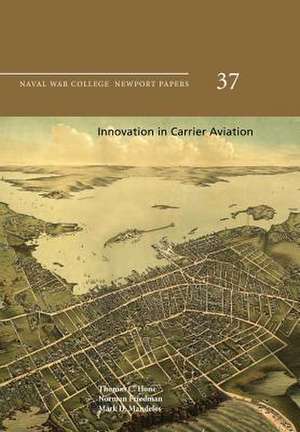Innovation in Carrier Aviation
Autor Thomas C. Hone, Norman Friedman, Mark D. Mandelesen Limba Engleză Paperback
Preț: 133.48 lei
Nou
Puncte Express: 200
Preț estimativ în valută:
25.54€ • 26.74$ • 21.13£
25.54€ • 26.74$ • 21.13£
Carte disponibilă
Livrare economică 17-31 martie
Preluare comenzi: 021 569.72.76
Specificații
ISBN-13: 9781478386377
ISBN-10: 1478386371
Pagini: 236
Dimensiuni: 170 x 244 x 13 mm
Greutate: 0.38 kg
Editura: CREATESPACE
ISBN-10: 1478386371
Pagini: 236
Dimensiuni: 170 x 244 x 13 mm
Greutate: 0.38 kg
Editura: CREATESPACE
